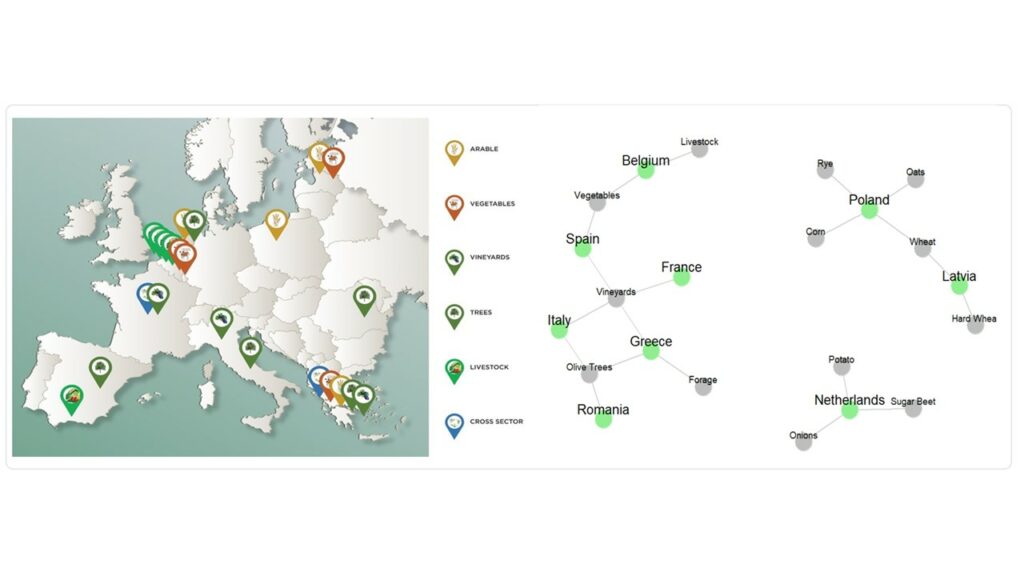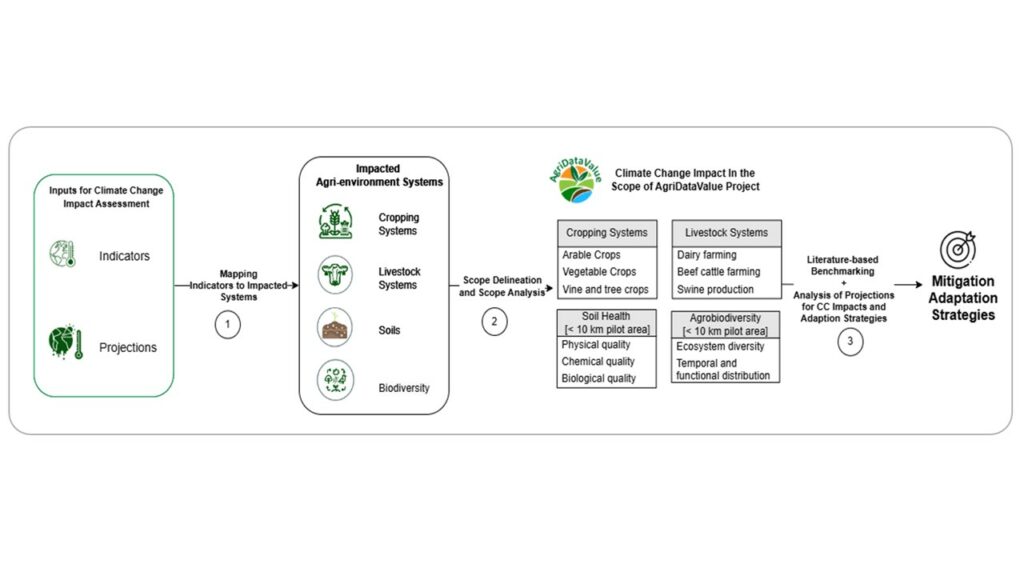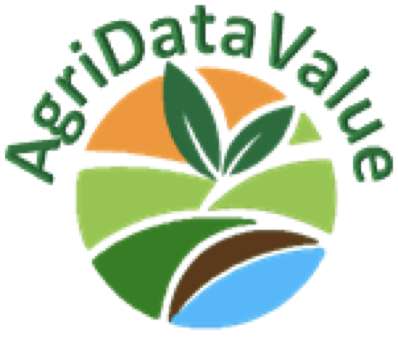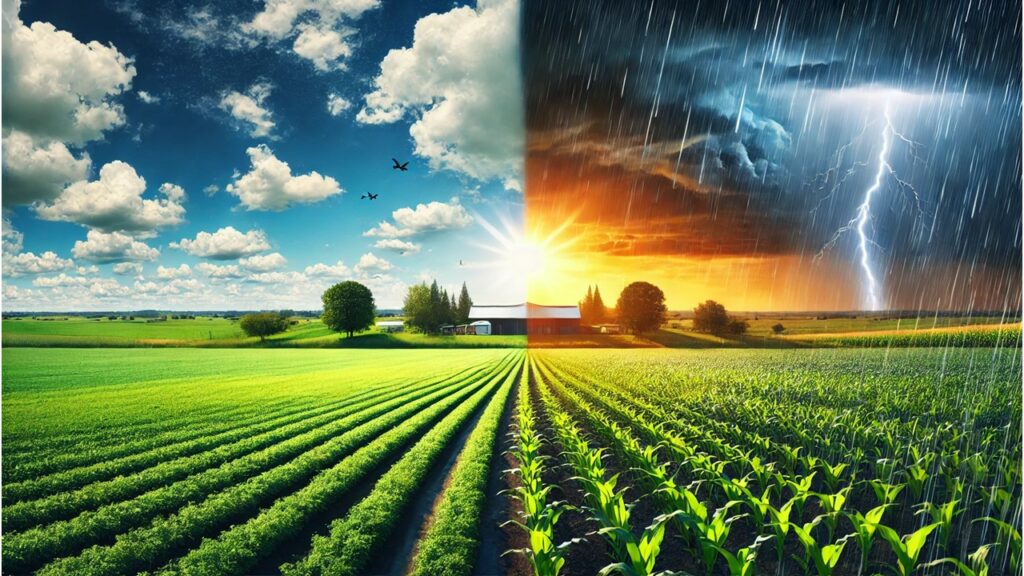Quest for future-ready farms
The weather is getting wilder, the seasons less predictable, and farmers are feeling the heat—literally! Climate change is reality, it isn’t some distant threat; it’s here, reshaping our soils, crops, livestock and biodiversity. What does the future hold for my farm and other agri-environmental systems near and far, in the face of the changing climates? This is the pressing worry and question of farming communities in Europe and globally today.
One effective approach to addressing such an important question on the impact of climate change challenges in agriculture is co-designing measures that enhance resilience through both long-term mitigation as well as short-term adaptations.
Co-designing for resilience
In the AgriDataValue project, assessing the impact of climate change in the agriculture systems is one of the main addressed topics. The AgriDataValue Consortium is composed by a multi-stakeholder partnership that comprise agricultural practitioners (farmers, farming-companies, and cooperatives), CAP–agencies (Common Agricultural Policy) paying agencies, and technical technology partners working in the data-driven sectors, for a total of 30 partners from 14 European countries, and 23 pilots across nine EU countries. The adopted approach to address Climate change is to combine both the historical trends and the future projections of key climate change indicators, to arrive at the impact of climate change in biodiversity, soil health, cropping systems and animal husbandry. The ultimate target is to contribute to the sustainability of the European Agri-environmental systems (AES) today and in the future through developing adaptation and mitigation strategies.
Countries and pilot agricultural Systems
Agricultural systems in Europe are highly diverse and complex, shaped by a wide range of plant and animal commodities, as well as the interactions between climate and management practices across various environments. Key components of these systems, considered for assessing climate change impacts, include cropping systems, livestock systems, soil health, and agro-biodiversity. These components encompass a variety of crops such as arable crops, vegetables, and trees found in vineyards and olive groves, as well as livestock and cross-cutting issues like soil quality and biodiversity. For instance, in Poland, the focus is on arable crops such as wheat, corn, rye, and oats, while in the Netherlands, the emphasis is on potatoes, onions, and sugar beets. Latvia centers on wheat and hard wheat, whereas Greece focuses on forage, vineyards, and olive trees. Belgium is known for its vegetables and livestock, Spain for its vegetables and vineyards, and France for its vineyards. Italy’s agricultural system assessment includes both vineyards and olive trees, while in Romania it is olive trees.
Climate change indicators and their projections
Indicators of climatic and meteorological conditions constitute a vital category of tools used to assess and understand climate characteristics and changes, as well as their impacts on our agri-environment and societies. These indicators capture a variety of parameters related to climate and weather conditions. Their utility lies in their ability to provide valuable information on long-term climate trends, seasonal variations, as well as extreme weather events. These data enable the assessment of climate impacts on ecosystems, natural resources, human activities, and infrastructure. Additionally, they serve as a basis for developing adaptation and mitigation strategies against climate change, as well as policies for sustainable environmental management. Some of the selected key indicators include metrics such as land cover classification, land surface temperature, evapotranspiration, soil composition, the normalized difference water index, and more. They serve as a baseline for understanding how agricultural systems have responded to environmental changes over time and set the foundation for future projections.

Projection of indicators is done building upon these historical indicators using CMIP6 models (1) for the years 2030, 2050, and 2070 under two scenarios: SSP2-4.5 (2) and SSP5-8.5. These projections include indicators like air temperature, soil water storage capacity, precipitation, drought frequency, and snowfall flux, covering both short-term (2025-2030) and long-term (2030-2070) periods. Short-term projections focus on specific metrics such as near-surface air temperature, wind speed, and humidity, while the long-term forecast encompasses a broader range of 23 indicators. These projections will be downscaled to 1km and 10 km resolutions to allow us to assess their impact on Pilot’s representing diverse cropping systems and livestock husbandry practices in landscapes harbouring different ecosystems and soils, the sub-systems are targeted for assessment of the effects of climate change and tailored recommended adaptation and mitigation strategies.
Mapping indicators, impacts and coping strategies
To effectively assess the impact of climate change on agricultural systems, a detailed mapping of candidate indicators to the affected agri-environment systems is being carried out. This mapping aligns historical trends and projection of indicators with possible expected impacts supported by literature and expert elicitations on specific AES such as cropping systems, livestock systems, soil health, and biodiversity. For examples, in scenarios of increased projected temperature, established research indicates that the impact on cropping systems might include challenges related to shifts in growing seasons, water availability, and crop productivity, leading to changes in crop types, planting schedules, and overall agricultural practices. Livestock systems will be affected by increased heat stress, altering feed availability and quality, and affecting animal health, growth rates, and reproduction. Soil health, a crucial foundation for sustainable agriculture, could degrade due to erosion, nutrient depletion, and changes in moisture retention, threatening long-term productivity. Agrobiodiversity, which supports the resilience of agricultural ecosystems, may decline as climate change alters habitats, reduces species diversity, and disrupts the balance of organisms essential for pest control, pollination, and nutrient cycling. Together, these impacts highlight the need for adaptive strategies to protect the sustainability and productivity of agricultural systems.
The major outcome of the conducted study – still being in progress – based on such projected impacts, is a set of recommendations for both short- and long-term actions. Taking the scenario of projected increased temperature as example indicator, the literature on climate adaptation and mitigation strategies offers variety of approaches. Short-term adaptation strategies may include adjusting planting schedules to account for shifts in growing seasons and implementing better water management practices, such as irrigation systems or rainwater harvesting. Farmers may also adopt minimum or zero tillage practices, which help maintain soil moisture, prevent erosion, and improve soil structure, particularly in regions facing drought or heavy rainfall. Additionally, diversifying crop varieties that are more heat- or drought-tolerant could help farmers cope with changing climatic conditions. Long-term mitigation strategies could involve adopting agroforestry practices, where trees are integrated into agricultural landscapes to sequester carbon, enhance biodiversity, and improve soil health. Sustainable land management practices that improve soil organic matter and reduce chemical fertilizer use will help mitigate climate change while making farms more resilient. Lastly, shifting to agroecological farming systems, such as intercropping or organic farming, could improve farm resilience to changing environmental conditions while maintaining sustainability.
Road map to resilience
The initial results of the climate change impact assessment on agriculture systems that we produced so far, are starting to provide valuable insights into how the systems can prepare for a changing climate, with specific strategies tailored to the needs of farmers across Europe. By using climate projections, historical data, and expert insights, we can develop adaptation and mitigation strategies that are both practical and scalable. As we move forward, the integration of climate indicators into decision-making tools will help farmers, policymakers, and researchers make informed choices. This collaboration will ensure that farmers across Europe are ready for the challenges ahead, building climate-resilient agricultural systems that can thrive in the face of uncertainty. Through continuous monitoring and the active engagement of farming communities, both the short- and long-term strategies would remain effective to mitigate and enable the systems adapt in the face of evolving climate challenges while ensuring environmental sustainability.

(1) The Coupled Model Intercomparison Project (CMIP) is a global scientific initiative designed to improve the understanding of climate change by comparing different climate models. It provides a framework to simulate past, present, and future climate conditions based on various factors such as greenhouse gas emissions and land use changes. The latest phase, CMIP6, integrates data from multiple climate models worldwide to generate future projections, helping scientists and policymakers assess potential climate impacts.
(2) Within CMIP6, Shared Socioeconomic Pathways (SSP) are scenarios that describe different possible futures based on socioeconomic developments and greenhouse gas emissions. These pathways help researchers explore how human activities might influence climate change. SSP2-4.5 represents a future where moderate efforts are made to reduce emissions, leading to a balanced climate response, while SSP5-8.5 assumes high emissions with minimal climate policies, resulting in more extreme warming and environmental changes. These projections provide valuable insights for developing climate adaptation and mitigation strategies.


